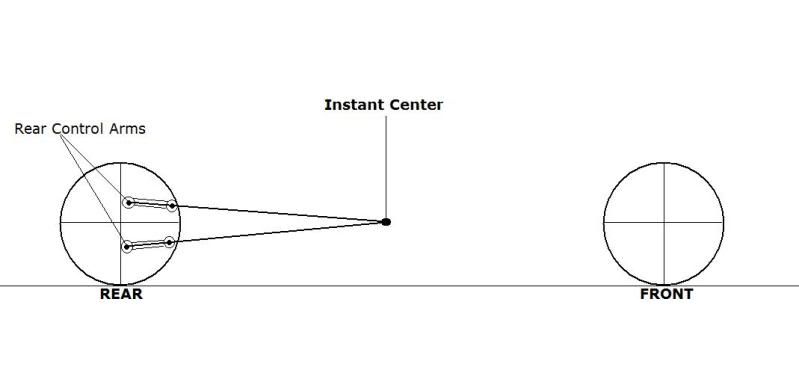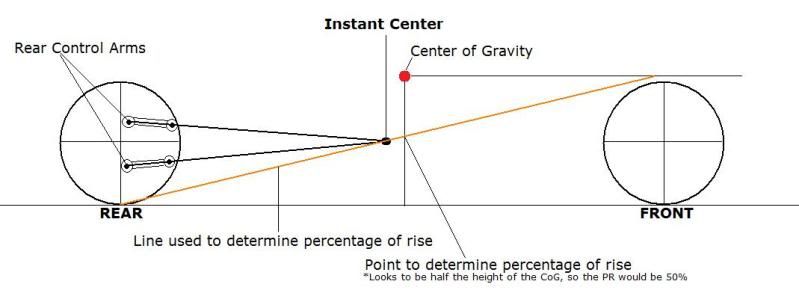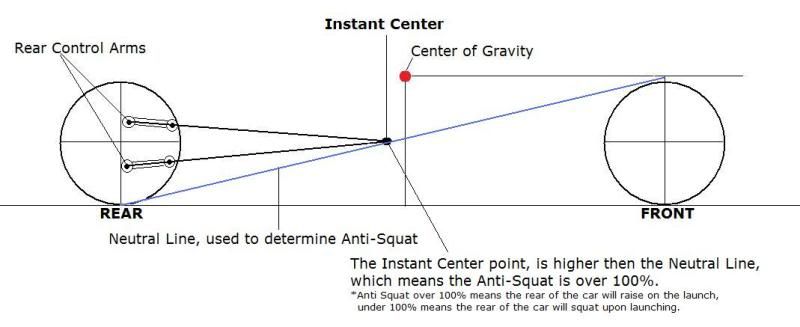 04-05-2013, 08:27 AM
04-05-2013, 08:27 AM
|
#30
|
|
Senior Member
Join Date: Jul 2008
Posts: 739
|

Below is the best explanation I have seen for the proper adjustment of our lower control arms:
Quote:
The lower the rear of the arm drops, the "shorter" the IC (instant center) point is, in comparison to the originating point (rear axle)
The "shorter" the instant center, the harder the suspension applies pressure, which drives the tires to the pavement promoting traction.
The location of the instant center in comparison to the neutral line, determines the "anti-squat" percentage. The higher the IC point is, the higher the body of the car will be upon launch, hence, anti-squat.
If the IC point is under the neutral line, the car will squat. The lower the IC point is, the more the car will squat.
So what does this do? Imagine your car tires being your feet, and the body of the car, being your actual body (ankles to head)
Stand straight up on a scale, squat quickly and what does the weight on the scale read? It drops, right?
Now, squat on a scale, shoot up really quick. What does the weight do, raise? So more pressure is applied on the scale when raising.
Moral of the story: If the rear of the car squats, the suspension is compressing too rapidly to hold enough pressure to maintain traction upon launch.
Keep in mind, if the car raises too much (LCA too low) in the rear....it will fall fast and can/will unload the suspension which causes spinning....
You have to find the fine line.
Here are some pictures I drew up years ago.

  
|
__________________
To view links or images in signatures your post count must be 10 or greater. You currently have 0 posts.
HP numbers are good and all, but they are like asking someone how much they can bench. What difference does it make if I can still kick your ass?
|
|
|

|